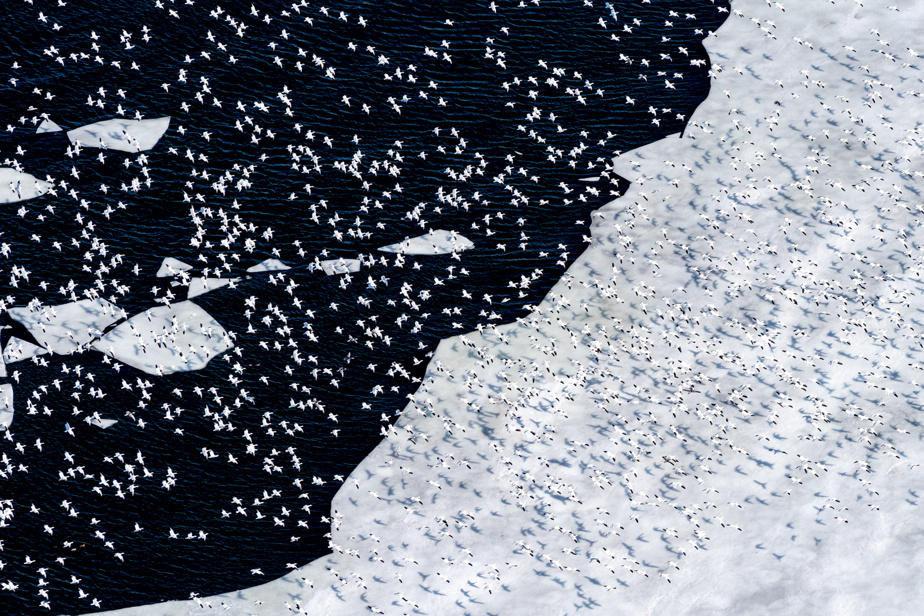
PHOTO YVES TREMBLAY, EYES FROM THE SKY, SPECIAL COLLABORATION
Pre-spring is when the ice begins to melt. They stand out according to the movement of the waters, as here in Mohawk territory on the St. Lawrence River between Akwesasne and Kahnawake.

PHOTO YVES TREMBLAY, EYES FROM THE SKY, SPECIAL COLLABORATION
The Îles-de-la-Madeleine, seen here in Havre-Aubert with the site of La Grave and Entry Island in the background, are part of the Mi’gmaq territory of Gespe’gewa’gi .

PHOTO YVES TREMBLAY, EYES FROM THE SKY, SPECIAL COLLABORATION
Until April, it is possible to walk on the ice and see the red sandstone cliffs of the Magdalen Islands up close. Here, the Étang-du-Nord lighthouse erected on Cap Hérissé.

PHOTO YVES TREMBLAY, EYES FROM THE SKY, SPECIAL COLLABORATION
Pre-spring is the season when the pups are born on the pack ice. The seals are safe there far away on the ice of the Gulf of St. Lawrence.

PHOTO YVES TREMBLAY, EYES FROM THE SKY, SPECIAL COLLABORATION
The name Quebec refers to the Algonquin word meaning “narrow passage”, used to designate the narrowing of the river at Cap Diamant, as can be seen here with its ice at the beginning of March.

PHOTO YVES TREMBLAY, EYES FROM THE SKY, SPECIAL COLLABORATION
At the end of April, all along the St. Lawrence River, the ice breaks off, as here along the Seaway near Kahnawake, on Mohawk territory.

PHOTO YVES TREMBLAY, EYES FROM THE SKY, SPECIAL COLLABORATION
During the pre-spring season, which the Atikamekw call Sikon, they make bark baskets that can hold the maple sap collected at this time of year.

PHOTO YVES TREMBLAY, EYES FROM THE SKY, SPECIAL COLLABORATION
In this image showing the community of Akwesasne, we can see the border of two countries (Canada and the United States), two provinces (Quebec and Ontario) and three nations (Francophone, Anglophone and Aboriginal! )

PHOTO YVES TREMBLAY, EYES FROM THE SKY, SPECIAL COLLABORATION
The Atikamekw community of Manawan, in Haute Mauricie, is surrounded by a mixed forest of conifers and deciduous trees, including sugar maples. It is to the aboriginals that we owe the maple syrup.

PHOTO YVES TREMBLAY, EYES FROM THE SKY, SPECIAL COLLABORATION
Logging in the Nitaskinan, ancestral territory of the Atikamekw people which encompasses practically all of Mauricie and part of Lanaudière

PHOTO YVES TREMBLAY, EYES FROM THE SKY, SPECIAL COLLABORATION
In mid-April, the low plateaus of the Georges River are revealed. This emblematic Nunavik river has its source in the Torngat Mountains that can be seen in the distance.
